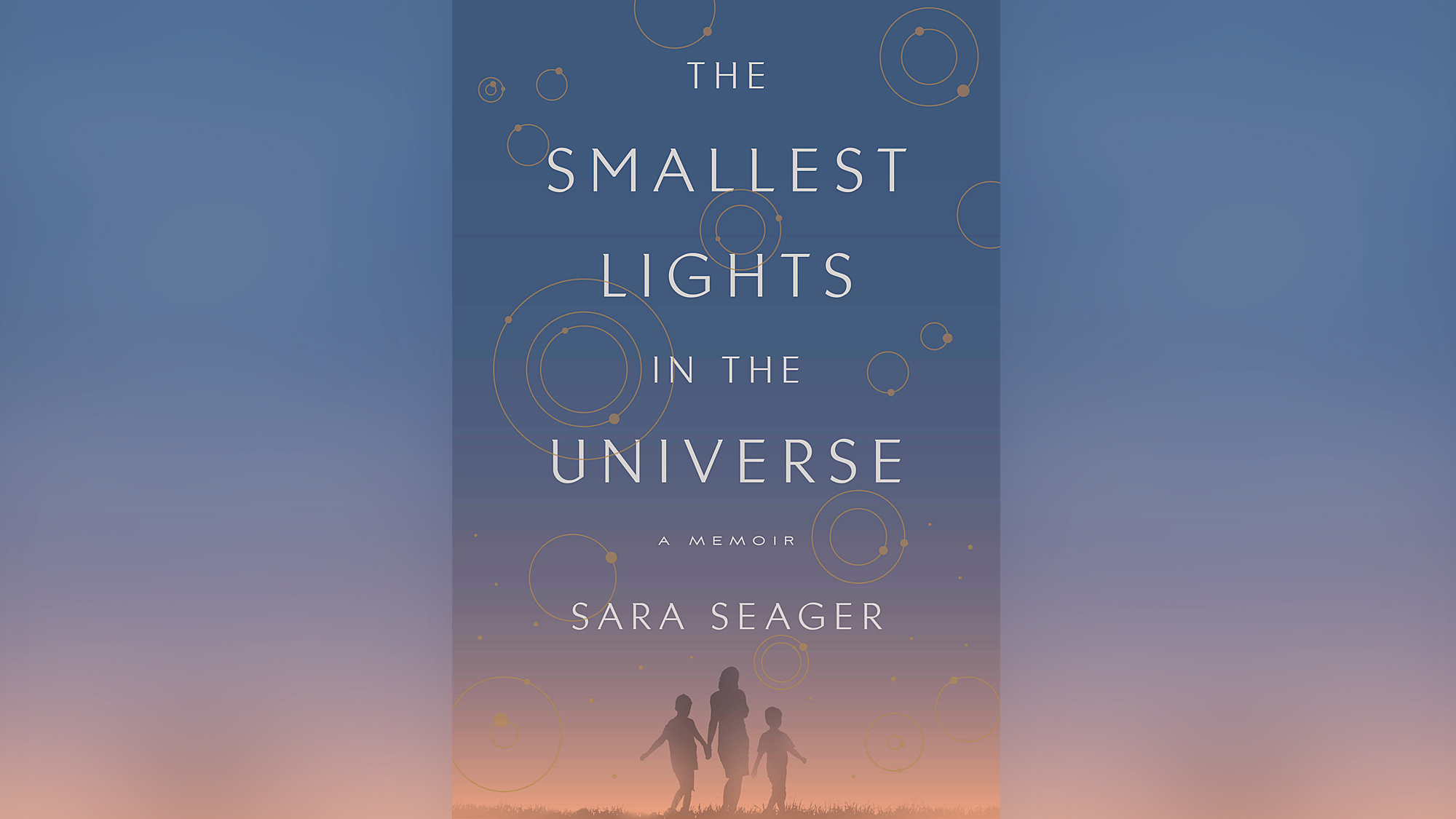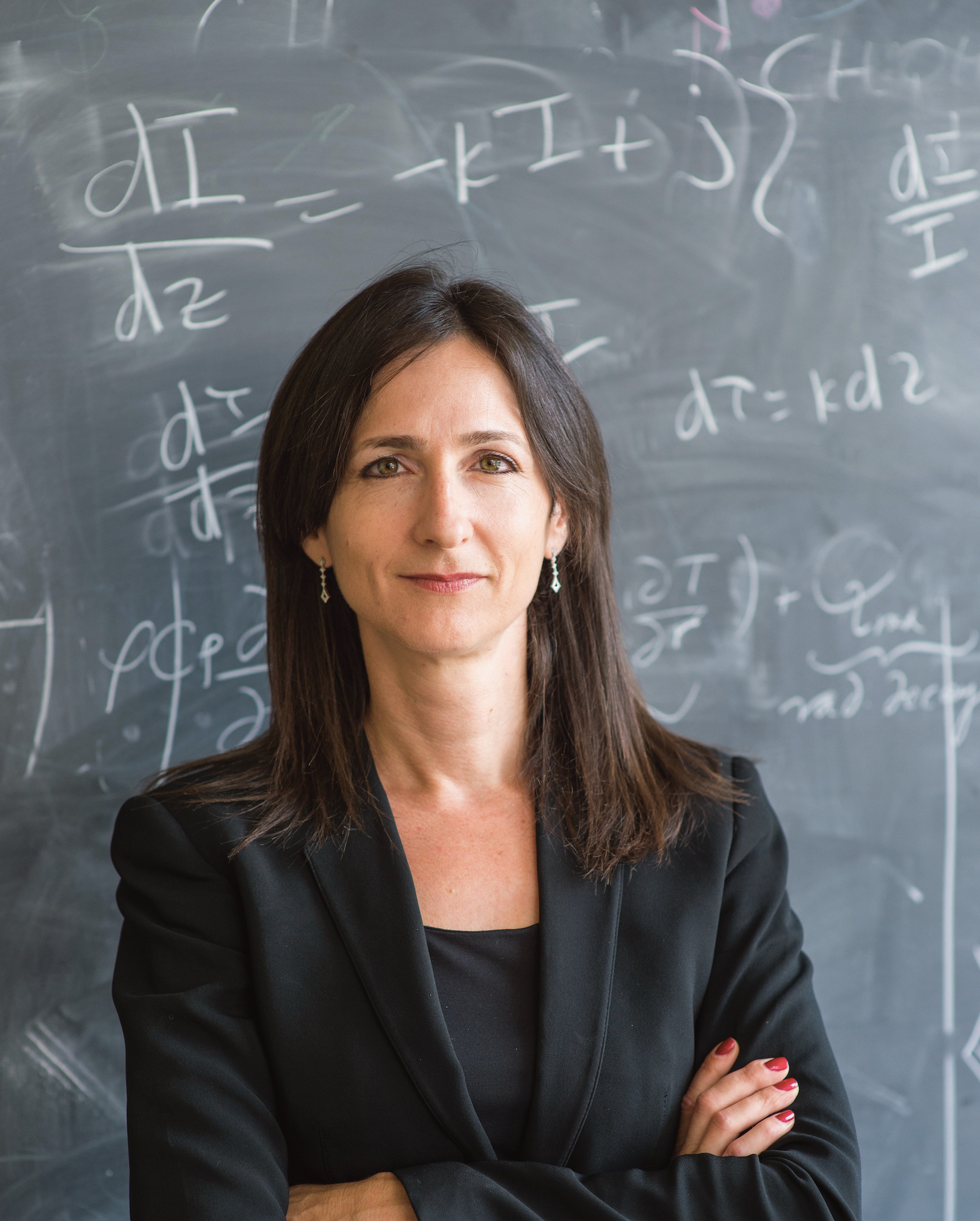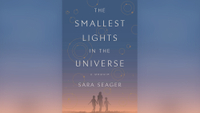'The Smallest Lights in the Universe' explores the possibilities of life on Earth and far beyond it

MIT astronomer Sara Seager has a quest: to find a second Earth. That scientific quest has developed and persisted against the backdrop of a personal life full of adventure, love and heartbreak.
In her new memoir, "The Smallest Lights in the Universe" (Crown, 2020) Seager balances each of those aspects of her life. She recounts her difficult childhood, her introduction to astronomy, her journeys exploring the vast spaces of northern Canada, her exoplanet research, the loss of her first husband to cancer and the discovery of her second. (Read an excerpt from "The Smallest Lights in the Universe.")
Space.com sat down with Seager to talk about her research and her personal life, and the way they intersect. This interview has been edited for length and clarity.
Related: Best space and sci-fi books for 2020
The Smallest Lights in the Universe: A Memoir
Crown, 2020 | $25.20 on Amazon
In this luminous memoir, an MIT astrophysicist must reinvent herself in the wake of tragedy and discovers the power of connection on this planet, even as she searches our galaxy for another Earth.
Space.com: This book is very different from perhaps a typical new book by a scientist. How did it come about for you and why did you want to write it?
Sara Seager: When I first met my widow friends, I asked them if they were writing a book, because it was such an unusual experience that I thought people should know about it. We usually hide death away; we keep people from it and it's very taboo to reach out to people who have had a death in the family. So I wanted to share that, that was one of the reasons.
But how it came about was really more practical because someone wrote a profile about me in the New York Times ... Before then it didn't really occur to me that I could create a book-length story that appealed to people and that brought together a number of different themes that have always been percolating through my mind.
Get the Space.com Newsletter
Breaking space news, the latest updates on rocket launches, skywatching events and more!
One of the themes in the book is exploration. And I tried to tie together my earlier phase of my life, where I literally explored, not as brand new but exploring for myself, the north of Canada, the Northwest Territories. ... And it's the other exploration, like having scientific questions that are newly posed and trying to answer them for the first time ever. I tried to capture that theme of exploration as well. There's a lot of different threads through the book that I always kind of wanted to share with people. It's hard to say specifically how. If this is just a purely science conversation, I could have very precise, quantitative answers to your questions, but this is a more nebulous process.
Related: 7 ways to discover alien planets
Space.com: Throughout the book, you elegantly weave together your research and your personal life. How did you put that together? Did you see parallels between the two at the time or only in hindsight?
Seager: I always saw it together, and I really did have a point in my life where I had to choose: Do I want to be an adventurer for my life? There's those people who go and they do big fundraising campaigns and they explore Antarctica — I really could have been that person. But I just loved science and I just loved solving problems. If I hadn't seen that from the start, I don't know if I could have given up the outdoors world — I mean, I still do it on weekends, but it's not really the same, obviously.
Space.com: Your career seems like it lined up really perfectly with this exoplanet flip from outlandish to plentiful, could you talk a bit about that?
Seager: When you go on an exploration journey, it's about risk and timing and opportunity. A lot of people don't realize that ... Some people are just more cautious and they're like, well, I don't know if I should do that, let me go away and think about it. And then the opportunity's gone. Other people are more risk-takers. Those adventurers out there, and I include myself in that category, those are risk-takers. And so you take opportunity and you take risks.
It wasn't just, like, a cool coincidence thing. My advisor offered me the chance to study exoplanets and I was just a risk-taker. And also, I don't know if this came out clearly in the book but I really hated grad school, I was really unhappy. I didn't actually know if I was going to finish grad school, and so I actually also had nothing to lose. It's almost the other side of that adventurous spirit — what do I have to lose, I have nothing better to do, if it didn't work out, it wasn't going to be the end of my world.
And it was a really hard problem I was working on, it was the hot Jupiter exoplanets that are very close to their star — they're many times closer to their star than Mercury is to our sun — and the problem my advisor gave me is what do their spectra look like? How does the radiation from the star travel through the planet's atmosphere and heat it, and what does it look like? And it was a really hard problem.
I knew that when I came out the other end, if the planets weren't real — which was the risky part of it, a lot of people were skeptical they were even planets — I knew I would have computer skills. I didn't know what field I would apply it to in astronomy, but I knew that because it was such a challenging project, I would come out with a skill. But also we were told repeatedly — and I hope grad students today still are — that a Ph.D. in the physical sciences is a ticket to employment. It might not be the job you set out to do, but people with that level of training and thinking are in high demand. The timing was just lucky, but the willingness to take a risk, to persevere in the face of all the other people being skeptics, that took something.

Space.com: What was your favorite section to write?
Seager: Well, my absolute favorite part is near the end, where I'm traveling to give a talk at an astronomy conference. ... And I was like, maybe I shouldn't have accepted, but I wanted to because I got my start in astronomy as a child, thanks to a public astronomy club called Royal Astronomical Society Canada, Toronto center, and they had star parties. My dad brought me to many of them and later as a teenager, I joined the club myself and I learned astronomy. So they invited me back to give a talk at their general assembly. And it was in Canada at this place called Thunder Bay. Unless you're from Canada, you have to look up where that is, it's north of Lake Superior. ...
I got to the reception that kicked off the weekend-long event and across the room, I saw this tall, dark, handsome man, which was so funny because, at an astronomy conference, everyone's usually so nerdy, like, it's still true for the amateurs. So I saw this guy, and I'm like, I have to meet him.
And just the whole story of how our friendship unfolded, and our romance, and that we were able to get married — because having a second chance in life, whether that's your career or in love, it's just such a wonderful blessing, such a wonderful life opportunity. ... It definitely was my favorite part to write because of course, reliving something so happy that led to something so great was just really great, my favorite part of the book for sure.
Space.com: You write a lot about seeing, seeing the world and yourself clearly, and the interplay between dark and light, and I was wondering if you could talk a bit about those ideas and how they came together for you?
Seager: I have to admit they first came together in the New York Times profile, so the idea wasn't mine. But there's this thought that maybe something catastrophically bad has to happen for you to see the good. That's the one side of it, that's when you say sometimes you need darkness to see, sometimes you need light. And the other part of that was supposed to be like a play on our search for another Earth, where we have to block out the starlight — we call it starlight suppression — we have to block out that starlight to huge, huge amounts, one part in 10 billion, in order to see, as the title says, the smallest lights in the universe, the small tiny lights from the other Earths. So you need darkness in a way because you've got to block out all the sunlight, but you also need light, you also need those little tiny lights. That's the thing with writing though, it's somewhat aesthetic and poetic more than rigidly scientific.
Space.com: Can you update us about any of the projects you discuss in the book? Starshade, perhaps, the instrument to block that light for space telescopes?
Editor's note: Since this conversation, Seager was a coauthor on research claiming to detect phosphine in the clouds of Venus, work she couldn't discuss at the time but that you can read about here.
Seager: For Starshade, the technology is still moving forward, but our team of scientists, we're kind of on hold right now. We're waiting for the decadal survey; they declare their priority-rank ordered list. So we're kind of waiting for that to see what direction our community can pursue with money. ...
My cubesat ASTERIA — that was aimed to be a prototype for what could be a constellation in the future. I'd started the idea one or two decades ago. It was a backup plan for space-based direct imaging. So if direct imaging goes on hold, then it's like another way to find an Earth, although it's a really challenging one. We could put up a constellation of dozens of tiny satellites. Each would be staring at one star looking for a very rare — but if it happens, incredibly important — transit of an Earth-size planet in the habitable zone of a sunlike star. TESS and other missions planned can't do that because they only look at one part of the sky for a month or so, whereas each of my satellites would focus on one star for as long as possible.
So I'm ramping up that constellation study as well; NASA gave us a small amount of money to study the constellation. We're not talking like Starlink, launching tens of thousands of satellites. This is just dozens. Phase one was the prototype itself, which was a huge success. Phase two would be for a mini-constellation of about six satellites. And then after that's done, we'll move to study how many we really need to get the job done.
Space.com: What do you hope people take away from the book?
Seager: I think everyone can take away something slightly different, but I hope that people can see at least my side of the story, my corner of space. One of the reviewers called it the birth and development of a new field of astronomy, to search for worlds like our own. ... I hope that people who didn't know a lot about exoplanets can walk away knowing about this incredible, evolving field of astronomy.
You can buy "The Smallest Lights in the Universe" from Amazon or Bookshop.org.
Email Meghan Bartels at mbartels@space.com or follow her on Twitter @meghanbartels. Follow us on Twitter @Spacedotcom and on Facebook.
Join our Space Forums to keep talking space on the latest missions, night sky and more! And if you have a news tip, correction or comment, let us know at: community@space.com.

Meghan is a senior writer at Space.com and has more than five years' experience as a science journalist based in New York City. She joined Space.com in July 2018, with previous writing published in outlets including Newsweek and Audubon. Meghan earned an MA in science journalism from New York University and a BA in classics from Georgetown University, and in her free time she enjoys reading and visiting museums. Follow her on Twitter at @meghanbartels.










